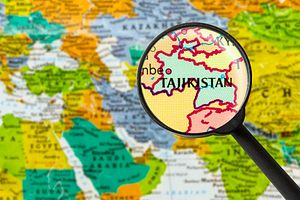Tajikistan appears to be inching toward joining the Eurasian Economic Union. With Dushanbe long suggested to be considering membership, this news ought to be taken with a grain of salt. According to Asia-Plus, the head of the Customs Service, Abdufattoh Ghoib (who had previously headed the anti-corruption service before President Emomali Ramon’s son took it over), told reporters on July 19 that they’d been studying the issue of entry and “The working group has prepared all necessary materials and submitted them for consideration to the government.”
Earlier in July, Leonid Slutsky, a member of the Russian State Duma — chairman of the committee on the “Commonwealth of Independent States, Eurasian integration, and links with compatriots” — said that Tajikistan would soon announce its intention to join the EEU. Per Asia-Plus, Slutsky said, “I think Dushanbe will declare its wish within the next year — it [Tajikistan] seeks after this more than any other CIS nation.”
To put it kindly: the EEU is far from a perfect union and has failed to live up to the rhetoric stemming from Moscow and Astana regarding the economic benefits of membership. To be fair, the union’s launch coincided with the great oil and gas crash that has pulled down the union’s largest economies.
Tajikistan has likely been watching the progress of neighboring Kyrgyzstan, which joined the union last August. While Kyrgyz leaders haven’t publicly regretted the decision to join the EEU, they have been candid with their disappointment at the sluggish pace of integration.
In October 2014, a full year before Kyrgyzstan would eventually accede, President Almazbek Atambayev said, “We are choosing the lesser of two evils. We have no other option.”
“Better to be inside the union than outside,” I wrote in February, summing up the less than enthusiastic Kyrgyz arguments in favor of joining. Oleg Pankratov, the deputy prime minister, said at the time, “The effect of Kyrgyzstan’s accession to the Eurasian Economic Union turned out to be blurry.”
Blurry or not, the same logic applies to Tajikistan: there may be no option but to join. The crux of this issue for Dushanbe is the significant proportion of the Tajik population that migrates to Russia for work. The region-wide, but Russian-centric, economic crash in the past year has impacted both remittance values and migration numbers. But while remittance figures for 2015 declined across the board for Uzbekistan, Tajikistan, and Kyrgyzstan, only Uzbekistan and Tajikistan saw a decline in the number of workers going to Russia. Kyrgyzstan, according to March 2016 IWPR report, saw the number of workers going to Russia increased by 5.4 percent, “a likely result of the easing of employment restrictions due to its EEU membership.”
This is the benefit Tajikistan would be seeking with a membership bid. The effect may not be immediate in economic terms but the state’s language would likely tout accession as a growth in opportunity.
The World Bank, in its June update of the Global Economic Prospects report, revised Tajikistan’s GDP growth forecast for 2016 and 2017 downward. While revisions are typical when future forecasting is involved, the downward revision changed the Tajik economic narrative from one of recovery beginning in 2016 to at least one more bad year. The January estimates predicted GDP growth in 2016 would rise from 2015’s estimated 4.2 percent to 4.8 percent. The June revision instead forecasts further decline, to 4.0, putting off the rise to 4.8 into 2017.
However, if Tajik state statistics are to be believed (they aren’t) the recovery has already arrived. Asia-Plus reported the government’s statistics agency as saying that GDP grew by 6.6 percent in the first six months of 2016 compared to the same time period in 2015, and “The government expects the GDP to rise 7.0 percent in a year to December 31, 2016.”
For Russia, the benefits of Tajik membership are decidedly more symbolic than economic. The country’s economy is among the smallest in the region (no matter whose statistics you consider), as is its population. Nonetheless, Tajikistan’s membership would add another piece to the puzzle of a more unified (at least symbolically) Eurasia. Even if Tajikistan’s progress toward joining is excruciatingly slow, periodic stories about the union’s growth reflect well on the organization — that is, if they are not examined closely. With the European Union — on which the EEU was most certainly modeled — seemingly in crisis following the British vote to exit, Moscow is eager to toast the expansion and success of its own integration projects.

































